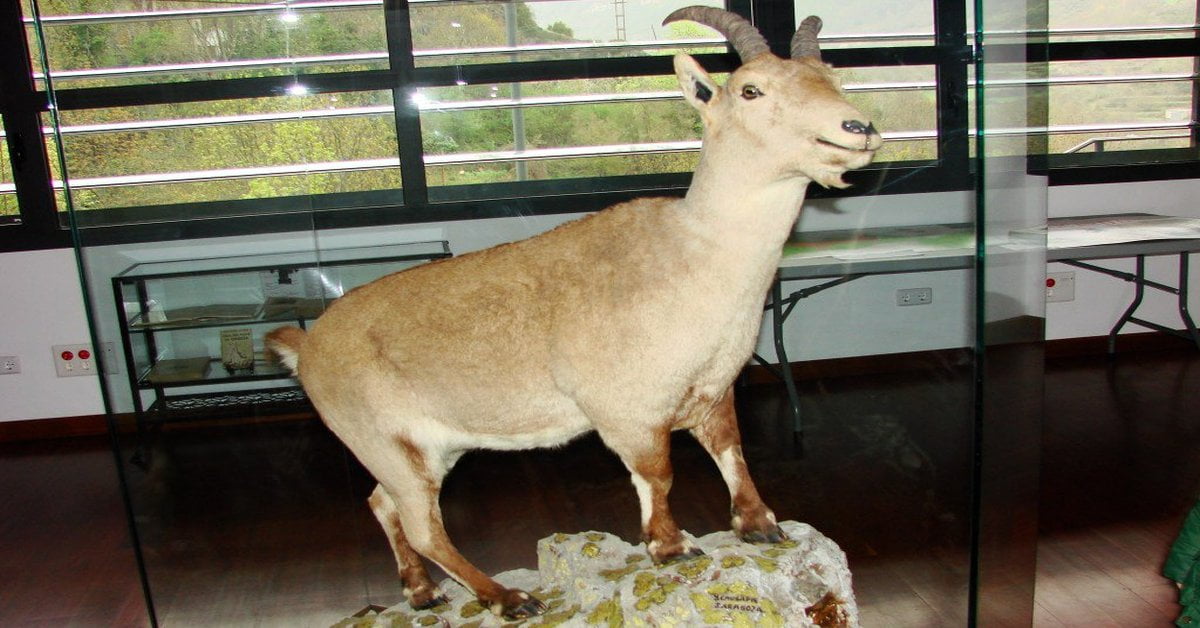The Pyrenean ibex was the first animal to be resurrected from extinction. It was also the first animal to go extinct twice.

In 2003 a mountain goat kid was born in Spain, and lived for just 10 minutes. Despite its brief lifespan, the small mammal represented a major scientific breakthrough.
It was a breed of mountain goat known as bucardo, or the Pyrenean ibex, which was once a common sight in the idyllic Pyrenees mountains that border France and Spain. Despite being an animal of regional pride, the bucardo’s grand curly horns made it a sought after hunting trophy. By the latter half of the 20th century they were more often seen mounted on the walls of hunting cabins than they were roaming the hillsides.
In the 1980s, extensive breeding efforts took place but it was too little, too late. By 1997, only one Pyrenean ibex remained. Rangers found the 13-year-old female named Celia, mangled beneath a fallen tree in a remote part of Ordesa National Park in January 2000.

Alberto Fernández-Arias, a wildlife veterinarian who had previously researched the reproduction of the Spanish ibex, captured “Celia” 10 months before her death using a blowpipe, and took cell samples from her ear and flank. The samples were taken to a lab where they were cultivated and then exposed to deep-freeze cryopreservation.
“Cloning in mammals was thought to be impossible,” Alberto told IFLScience. “Then in 1996, there was Dolly the Sheep. And that changed a lot of things.”
Using Alberto’s expertise in Spanish ibex reproduction, a team of French and Spanish scientists led by Jose Folch began working with Celia’s cells. They extracted nuclei from them annd injected them into goat eggs that had been emptied of their own genetic material. Then, the eggs were implanted into hybrids of Spanish ibex and domestic goats – a total of 57 embryos were successfully implanted. Only seven of these hybrids became pregnant and six eventually miscarried. One, however, was a success.
Against all odds, on July 30, 2003 a female bucardo kid was born.
“I pulled out the little bucardo. For that moment, it was the first time in history that an extinct animal was brought back alive,” Alberto added.

Humanity had defeated extinction for the first time. But only for a short moment.
“As soon as I had the animal in my hands, I knew it had respiratory distress. We had oxygen and special drugs prepared, but it could not breathe properly. In seven or 10 minutes, it became dead.”
The story did not hit the public’s imagination until 2009 when the scientific study was published. By then, however, the money had dried up and the researchers had parted ways. The bucardo was to remain extinct once more, making it the only animal in the world that went extinct twice
The idea of de-extinction and bringing back ancient species holds a zealous appeal to scientists and the public alike, even though many people question the ethicality of such efforts. The Lazarus Project in Australia, for example, was an attempt at resurrecting the Gastric-brooding frog from extinction, a species native to Queensland that gives birth through its mouth. In an other instance, scientists brought 28,000-year-old woolly mammoth cells back to life, which is another important, yet controversial feat.
Indeed, this milestone of the bucardo’s (very short) de-extinction might sound a bit like a Jurassic Park-style leap into the future, with all its unexpected repercussions. However, the scientists on the project did not see themselves as glorious pioneers removing the chains of extinction. For them, it was all about the bucardo.
Alberto explained, “When the bucardo were alive, we were trying to save them. When they all died, we were still just trying to save them.”
